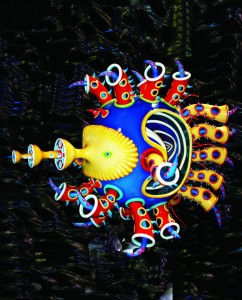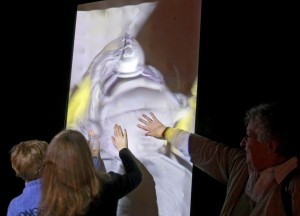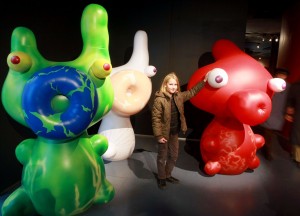Infinite 4D-Fish, 2008

Source: the artist

Source: the artist

Source: rubra
Yoichiro Kawaguchi is working with the reciprocal interaction of art and science. What he finds particularly interesting is establishing connections between computer graphics and forms that develop in nature, the way shapes, colours and surfaces freely unfold and independently evolve.
One outcome of these encounters is the “Gemotion Display” that, like an organic being, adapts its form and texture to its respective surroundings. Hundreds of pneumatic actuators deform the projection surface, corresponding to the images being shown. The result is a representation of the world that accommodates our natural perceptive faculties, which take into account factors like perspective, shadowing and surface texture. Conceivable applications are diverse indeed—from cinema to architecture.

Source: rubra
In Yoichiro Kawaguchi’s opinion, conventional robots exhibit two major shortcomings: design artistry and an emotional level in the human-robot interaction. In developing his robots, Kawaguchi combines findings and insights from psychology and neuroscience with technology and art.
This approach also manifests itself in his robot designs: cartoon-like shapes, short arms and legs, big eyes and a soft outer surface make a robot come across harmless and vulnerable. This child-friendly, “emotional” “Eggy robot” is meant to someday be able to socialize with his surrounding to begin to tremble as soon as someone approaches.
With the “Eggy Boy” the Ars Electronica Center presents the prototype for the soft outer surface of an “emotional” robot of the future.
Credits:
Yoichiro Kawaguchi, Supported by Kawaguchi Lab. The University of Tokyo